Retro Replay Review
Gameplay
Temple of Terror’s gameplay is a unique hybrid that marries the branching narrative style of a Choose-Your-Own-Adventure gamebook to the step-by-step, text-and-graphics format Adventure Soft perfected in the mid-1980s. You assume the role of a solitary adventurer, handpicked by the sage Yaztromo, and set off across the treacherous Desert of Skulls to reach the legendary lost city of Vatos. Along the way you’ll face cruel monsters, ancient mechanical deathtraps, and the fanatical disciples of the cult of Leesha, all rendered in evocative text descriptions accompanied by static, atmospheric illustrations.
(HEY YOU!! We hope you enjoy! We try not to run ads. So basically, this is a very expensive hobby running this site. Please consider joining us for updates, forums, and more. Network w/ us to make some cash or friends while retro gaming, and you can win some free retro games for posting. Okay, carry on 👍)
The core of the challenge lies in its inventory-based puzzles. Unlike the original Fighting Fantasy gamebook that tracked SKILL, STAMINA, and LUCK stats, Temple of Terror dispenses with randomness entirely, placing a premium on how you manage your limited carry capacity. You must decide which items to pick up, how to combine them, and when to deploy them — often in precise sequences that the game enforces with its “step-by-step” action model. This can feel restrictive if you’re used to the book’s free-form decision lumps, yet it also eliminates the frustration of repeated dice-based failures.
Puzzle solutions occasionally branch, nodding to the gamebook’s tradition, but you’ll find that some classic options have been relocated or reimagined. For example, a riddle that once yielded multiple correct answers in the book may here collapse into a single key item interaction. This focus on a smaller set of logical puzzles prevents you from brute-forcing your way forward and keeps you engaged in scrutinizing every line of text and graphic for hidden clues. Between battles with the sinister Messenger of Death and frantic inventory juggling, Temple of Terror delivers a steady, old-school adventure-game challenge.
Graphics
Temple of Terror’s visual style is firmly rooted in early 8-bit computer capabilities. Each scene is accompanied by a single, small illustration rendered in a limited palette that nonetheless captures the ominous atmosphere of the Desert of Skulls and the winding corridors of Vatos. These images aren’t animated in the modern sense, but they’re detailed enough to spark your imagination and convey the sense of dread that lurks around each corner.
The BBC Micro version, in particular, benefits from slightly sharper character outlines and richer color differentiation compared to its contemporaries on other home microcomputers. Text is displayed in a clean, monospaced font that remains easy to read even during tense puzzle sequences, and load times between locations are minimal, meaning you’re never left staring at a blank screen for too long.
While today’s players may find the graphics primitive, they play a vital role in grounding the narrative. When you finally step into the temple’s inner sanctum, the flickering torchlight in the static art and the cramped, shadow-driven layouts evoke real claustrophobia. For fans of retro gaming aesthetics, these illustrations are a highlight that enriches the reading-plus-exploration experience.
Story
At its narrative heart, Temple of Terror is a loose adaptation of Ian Livingstone’s Fighting Fantasy Gamebook #14. You’re summoned by Yaztromo to prevent Malbordus, Dark Elf champion, from seizing powerful Dragon artefacts and unleashing carnage across Allansia. Along your journey, you’ll encounter familiar faces and locations from the original book—albeit rearranged—and face moral choices that can alter the path forward.
The pacing of the story is methodical. Rather than rushing you headlong into combat, the game intersperses action scenes with puzzle-heavy segments that expand on the book’s lore. You might spend one chapter navigating winding caverns while deciphering ancient inscriptions, and the next wrestling with a trapdoor mechanism to avert sudden death. This measured progression lets the desert’s oppressive heat and the city’s stifling corridors settle in, creating a genuine sense of peril.
Characterization comes through brief but impactful dialogue snippets, mostly delivered via text. When the Messenger of Death appears to taunt you—it’s a small flourish, yet it adds a chilling cat-and-mouse dimension. Though you won’t grow attached to fully fleshed-out companions or allies, Yaztromo’s offscreen guidance and Malbordus’s looming threat keep your motivation high throughout the quest.
Overall Experience
Temple of Terror offers a compelling throwback to the golden age of text-and-graphics adventures. Its hybrid format may feel restrictive compared to modern point-and-click titles, but the enforced pace of its puzzles and the elimination of dice-roll randomness deliver a crisp, focused challenge. Inventory management and item sequencing reward careful reading and strategic thinking—traits that many longtime adventure gamers will appreciate.
The game’s atmospheric graphics and tight loading cycles immerse you in the harsh beauty of the Desert of Skulls and the oppressive gloom of Vatos’s inner sanctum. While today’s standards might balk at the simple art and text-based interface, these very constraints serve the narrative, making each revelation or trap feel earned.
For potential buyers, Temple of Terror is recommended for aficionados of retro adventures and Fighting Fantasy fans curious to see how a beloved gamebook transforms on computer. Its blend of exploration, puzzle solving, and classic fantasy storytelling remains engaging decades after release. If you relish methodical puzzles, atmospheric locales, and a story that unfolds at a deliberate pace, this solitary journey across Allansia’s sands is well worth undertaking.
 Retro Replay Retro Replay gaming reviews, news, emulation, geek stuff and more!
Retro Replay Retro Replay gaming reviews, news, emulation, geek stuff and more!
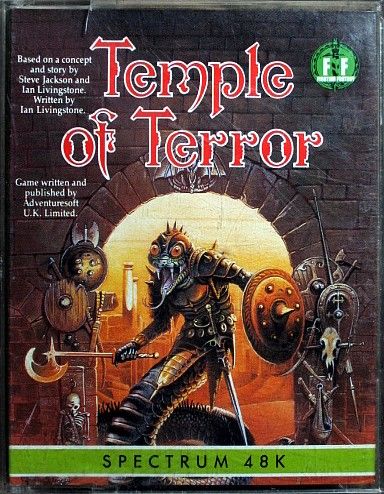
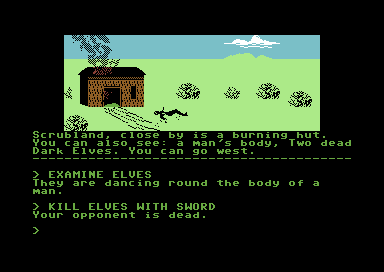
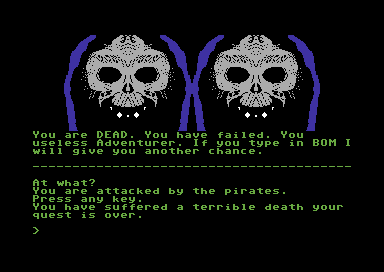
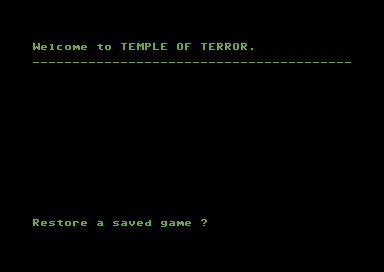
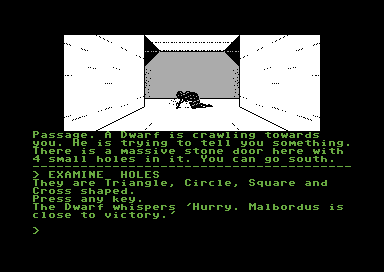
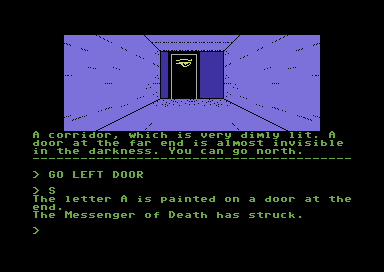



Reviews
There are no reviews yet.